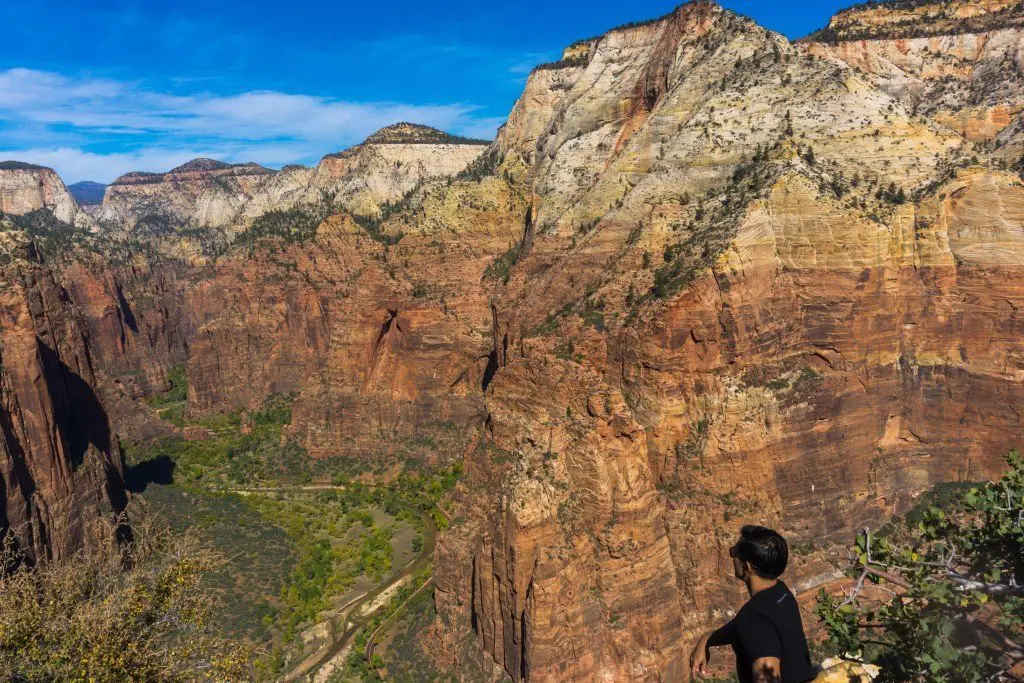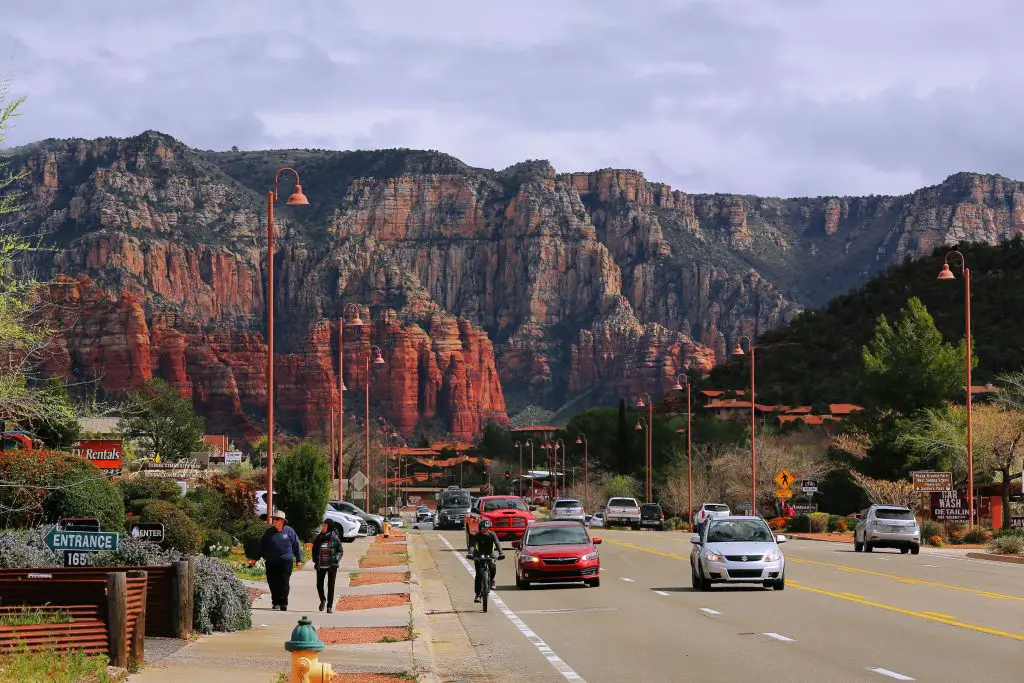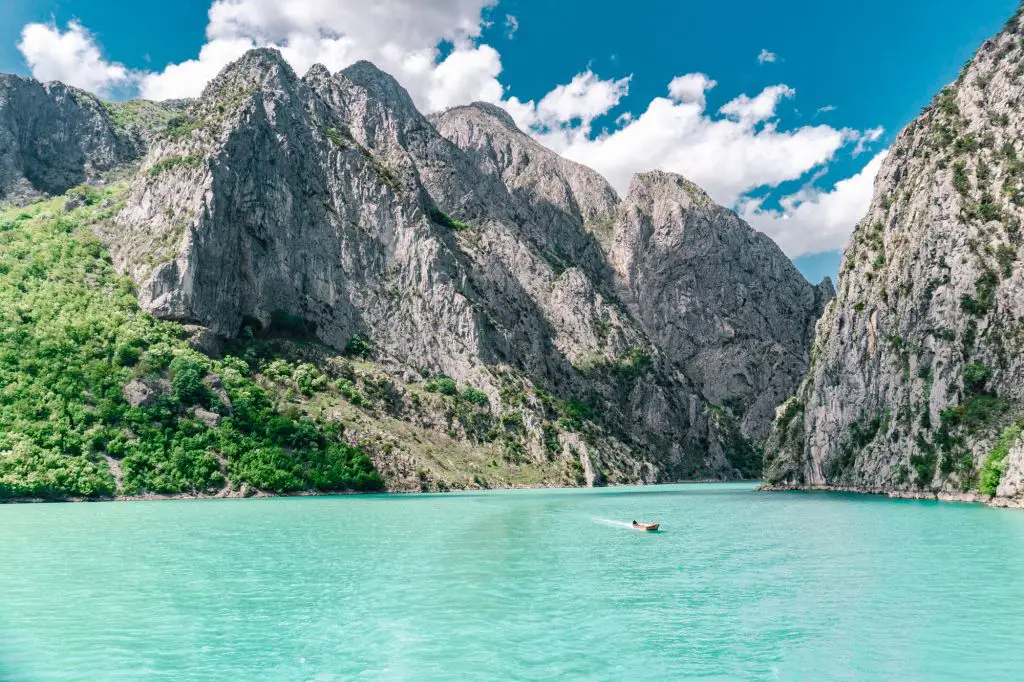Death Valley is my favorite national park in all of America and is an absolute must when visiting Las Vegas. I think it is one of the most unique and most stunning places on Earth (and I’ve to 90 countries around the world). I’ve spent quite a few days in Death Valley and it’s a place I always like to go back to because it offers just about everything you’re looking for.
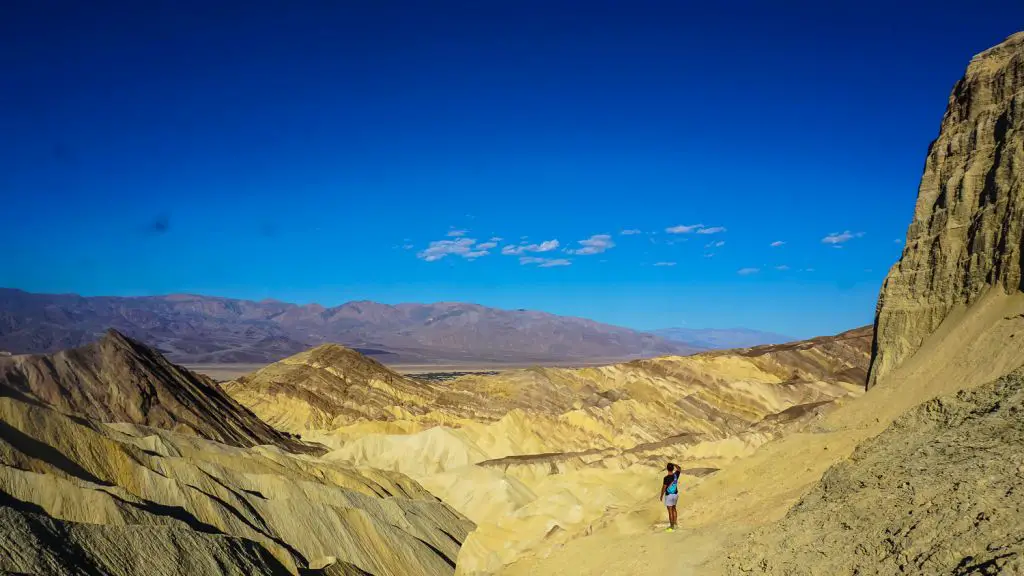
If you’re planning to visit Las Vegas and have ambitions beyond blowing all your money at the casino, visiting mediocre clubs, and being swarmed by millions of people, then visiting Death Valley should be #1 on your list. Of course, from Las Vegas you are spoiled for choices because you can visit Zion and Bryce Canyon to the east but for this post, I am focusing on Death Valley.
Best time to visit Death Valley
Death Valley is famous worldwide for setting record breaking temperatures. During the summer months, temperatures will regularly eclipse 120F (49c) and hiking in this temperature is a surefire way to severe dehydration. Joshua Tree is nearby and is slightly cooler but will see temperatures regularly above 100F (40c).
While it is definitely not advisable to visit these parks in the summer months, people still do it. Obviously extreme hydration is a necessity but also you should just call it quits between the hours of 11am and 4pm. Go relax at your hotel in the A/C to prevent anything disastrous from happening.
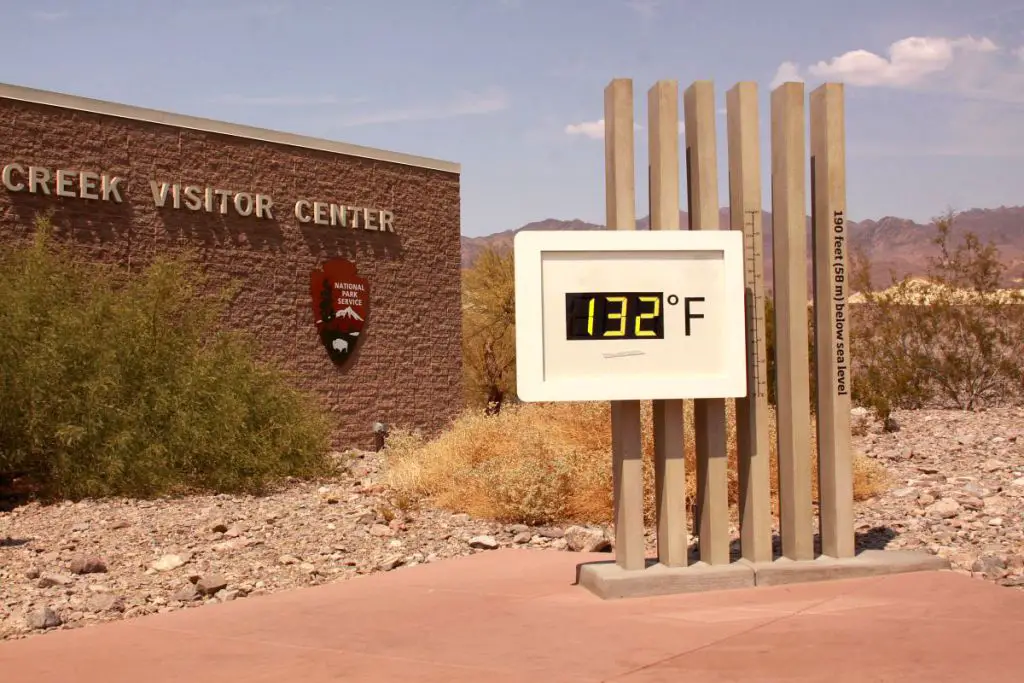
I visited Death Valley in late October which is a great time of year. Temperatures were a much more manageable 90F (32c) in Death Valley. Night time temperatures are even chilly at times, sometimes reaching temperatures below 15 degrees. Spring time is also a great time to visit these parks as the winter rains usually bring about beautiful flowers that dot the barren landscape of Death Valley.
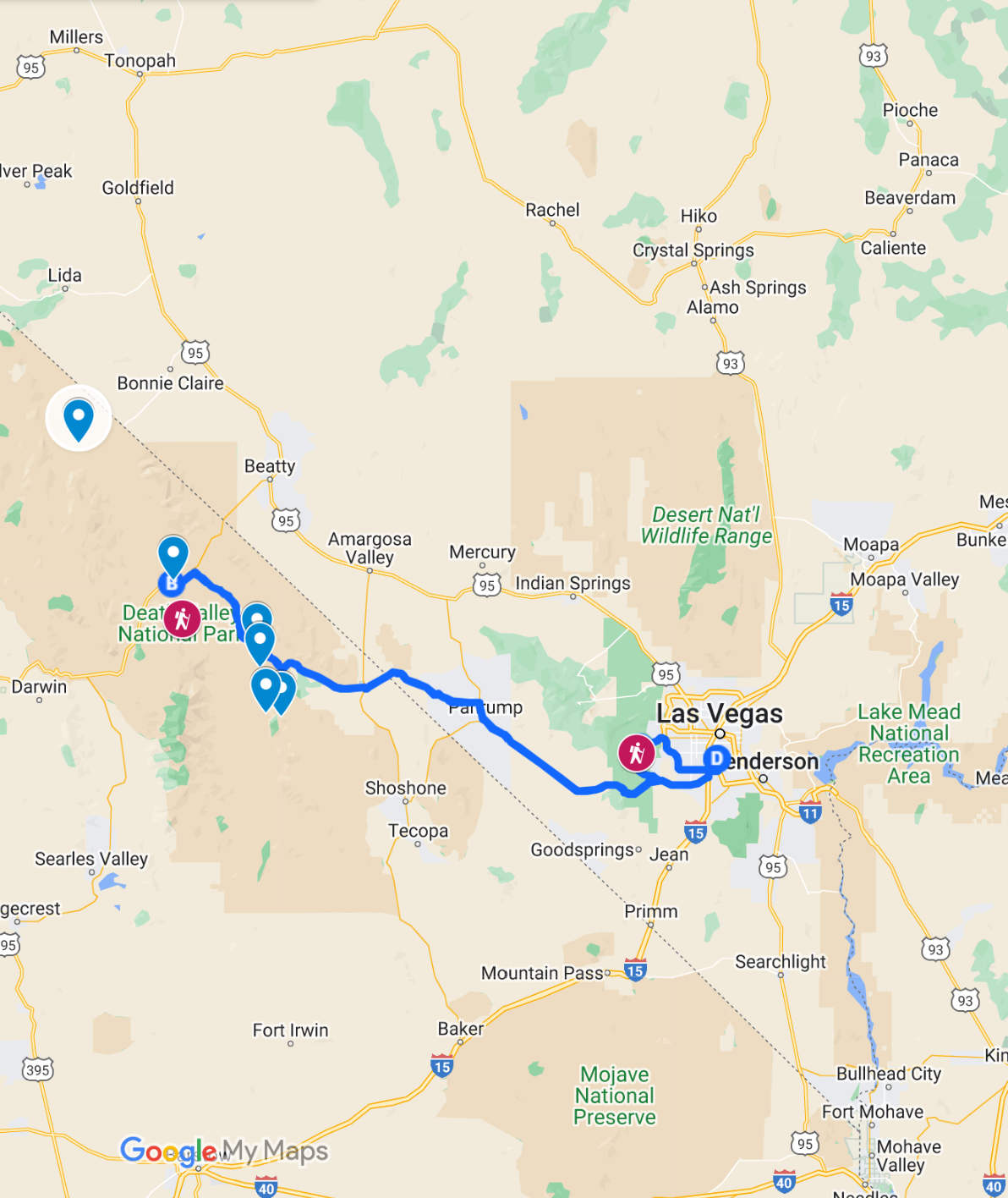
Las Vegas to Death Valley Itinerary Map
The trip starts in the Las Vegas and ends in Las Vegas. It’s imperative to rent a car for this trip but thankfully Las Vegas is one of the biggest car rental airports in all of the US. You’ll find cars in Vegas without any problem.
How many days are needed to visit Las Vegas and Death valley?
Las Vegas to Death Valley State park is 120 miles and takes just over two hours to reach. Given how large Death Valley is, I would recommend spending at least one night here so you don’t have to rush anything. Two nights would be ideal and almost essential during the months of May to October because it is simply too hot to do anything between the hours of 12pm-4pm.
Las Vegas to Death Valley Day Trip
Death Valley is an incredibly popular day trip from Las Vegas. In fact, if I had to choose one place to go out of all the amazing places within driving distance of Las Vegas, it would certainly be Death Valley.
You can definitely do this trip in a day and I will go into detail about this later in the post.
How much does Death Valley cost?
The entrance fee for Death Valley is $30 per car. This price is good for 7 days meaning you can stay inside the park at one of the many hotels for a week. You can also purchase an annual entrance pass for $55 which allows you to visit as much as you want and as many times as you want in 1 year.
Make sure to have the ticket visible on your car at all times otherwise you will be fined!
Free Entrance Days
Fees are waived at Death Valley National Park on the following days:
- Jan 17, 2022: Martin Luther King, Jr. Day
- Apr 16, 2022: First Day of National Park Week
- Aug 4, 2022: Anniversary of the Great American Outdoors Act
- Sep 24, 2022: National Public Lands Day
- Nov 11, 2022: Veterans Day
Day 1: Driving Las Vegas to Death Valley
The itinerary starts in Las Vegas. From the airport (or city), the drive from Las Vegas to Death Valley is 150 miles and takes 2.5 hours. As soon as you leave the city, you’ll see the landscape change into the dramatic mountain range that dominates all of Death Valley.
There’s not much to see along the way except for Red Rock National Park but I saved that for the end to visit on the way back to Las Vegas. I would recommend leaving Las Vegas as early as possible so you can see Death Valley National Park when the temperatures are cooler and the morning rays are still fresh.

Describing Death Valley
Describing Death Valley is an essay in and of itself. Most people think of Death Valley as just a very hot place (which it is) but it is so much more. To summarize as elegantly as possible, it is the ultimate display of nature’s superlatives.
Extremes on all ends colliding in one small park in California. From dramatic mountain ranges, to volcanic craters, to rolling sand dunes, to salt flats, to stunning badlands, this park as extremes of all ends merging in one park. You can drive a few minutes and be in a completely different landscape, all more stunning than the last.
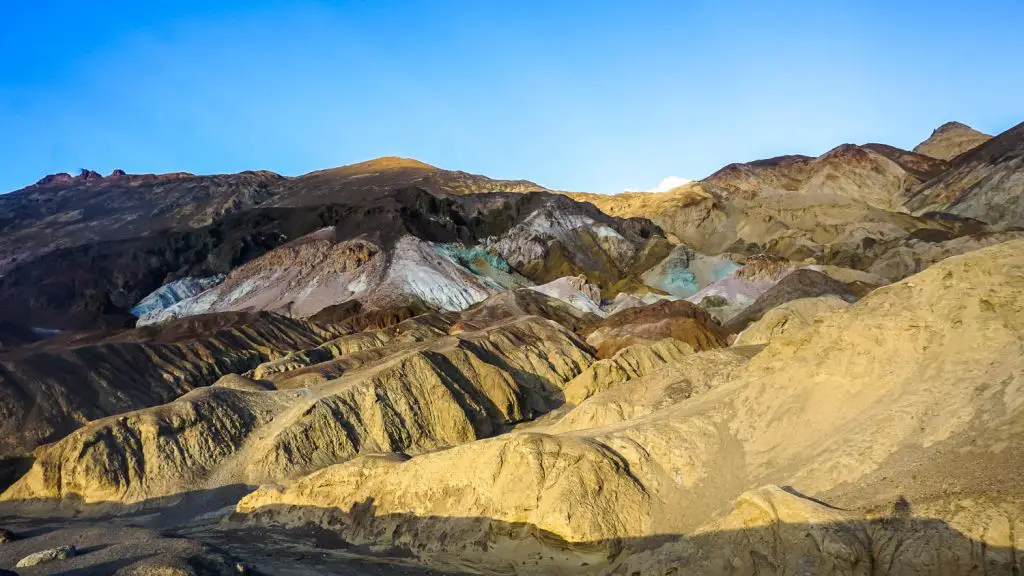
Personally, it reminded me a lot of previous places I’d been to. Namibia’s landscapes really resonate with me here, especially the drive around the Fish River Canyon. Bolivia’s Salt Flats are an obvious comparison to the much smaller Badwater Basin, and Zabriskie Point is so similar to Rainbow Mountain in Peru. Death Valley truly is a mind blowing place.
Where we stayed in Death Valley
Within the National Park, there are essentially two “villages”, Stovepipe Wells, and Furnace Creek that are more or less just hotels with a gas station. There are only 3 hotels in the entire National Park: The Oasis Inn, The Furnace Creek Ranch, and Stovepipe Wells Hotel. The Oasis and Ranch are located next to each other in Furnace Creek and are owned by the same company.

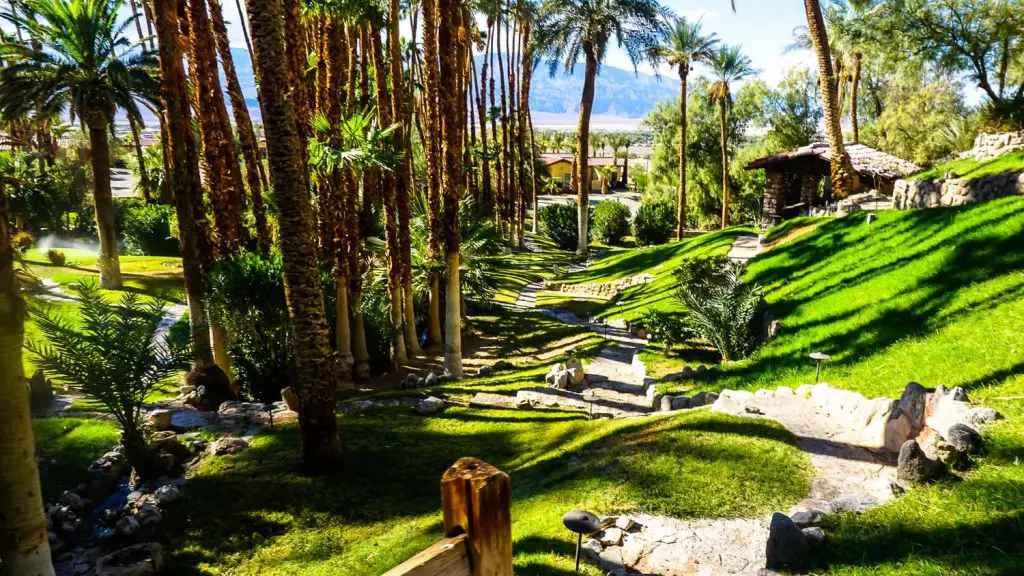



The Oasis Inn is incredibly nice, with high end dining, rooms, and a big pool area. The Ranch is slightly less luxurious but offers everything you need. We stayed at the Ranch as the rooms were much cheaper ($175/night vs $400+ at the Oasis). There are many accommodation options in the towns directly outside the park. Because the park is so big, we wanted to stay inside the park to avoid driving for so long to get in and out every day.
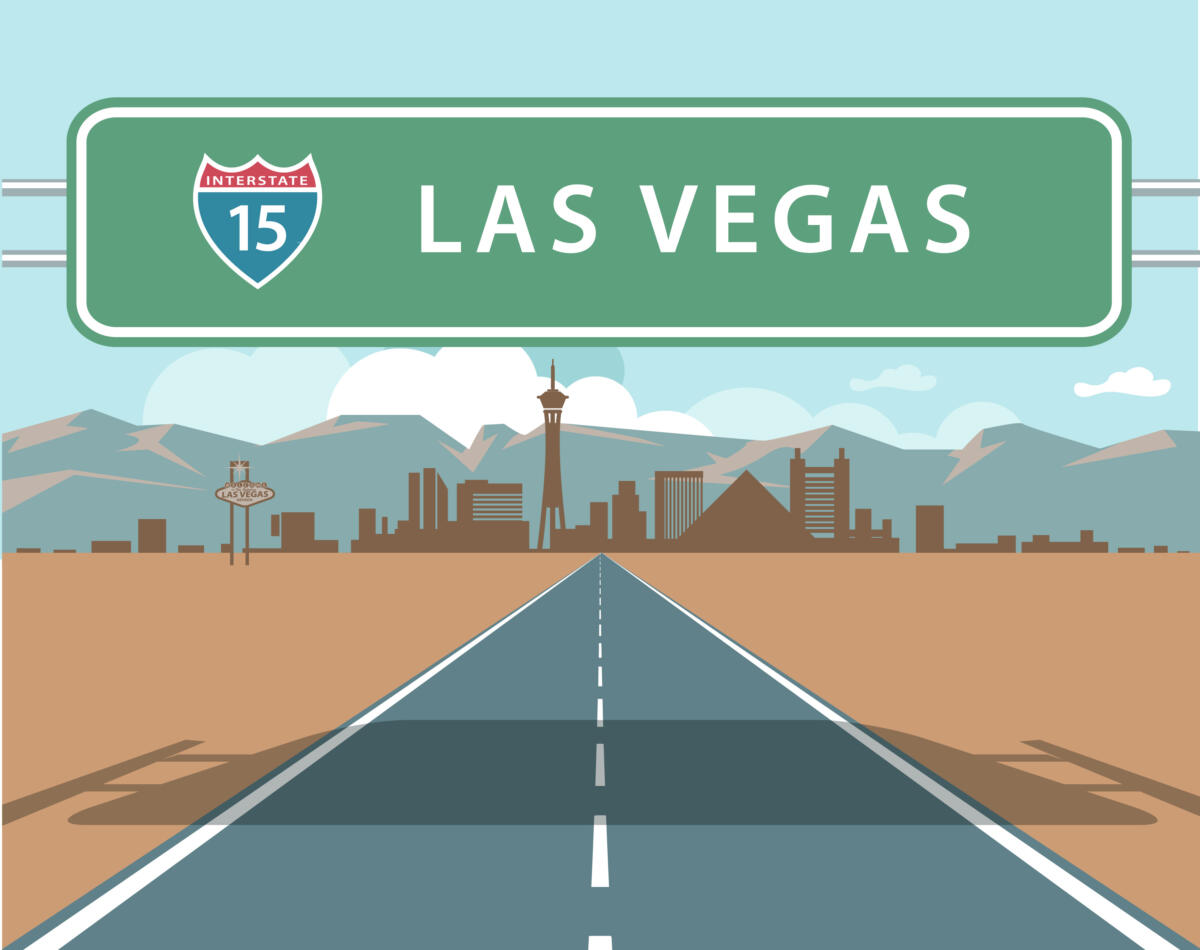
I would recommend booking accommodations at these two hotels in advance. They can book up quickly during the peak season months as there are literally only these three accommodation options and tourists want to stay inside the park.
Mesquite Sand Dunes for Sunset – 4:30 pm to 6:30 pm
We arrived at the south entrance near Death Valley Junction around 4pm. The Mesquite Sand Dunes are about 30 minutes inside the park so we drove straight to it. While the dunes are nearly as big or expansive as other deserts I’ve been to like in Morocco, or Egypt, the surrounding landscapes of Death Valley give it that otherworldly feeling.


Most people park their cars and walk a few minutes out to snap some pictures. I wanted to hike deeper into the dunes and get away from the crowds. The dunes themselves are not too intimidating. The sand is pleasant to walk on but not sink to your knees soft like the ones in Sossusvlei, Namibia that made climbing them incredibly difficult. The highest dunes here are probably 30m/100ft in height making them totally manageable, especially during the cooler sunset hours.


We walked for about 30 minutes until we pretty much got to the tallest dune in the area. We chilled here and watched the sunset over some wine. There was no one around us anymore and the views were totally worth it. As the sun set, the pink aura around the sky gave way to the moon rise which is just an amazing experience made even better.
And finally playing around with my drone yielded some great pics!
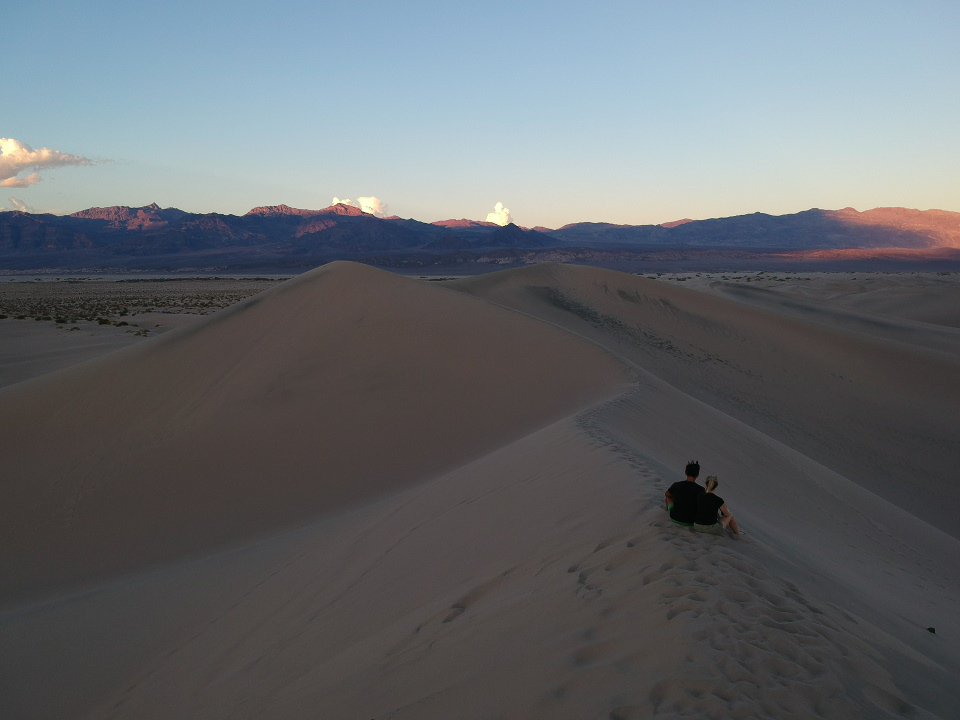
Dinner at Badwater Saloon
The Mesquite Sand Dunes are located next to the Stovepipe Wells Village. We had dinner at the old school bar and saloon here. The food was decent for what you could get being literally in the middle of nowhere. We shared a burger and some local beers before calling it an early night.
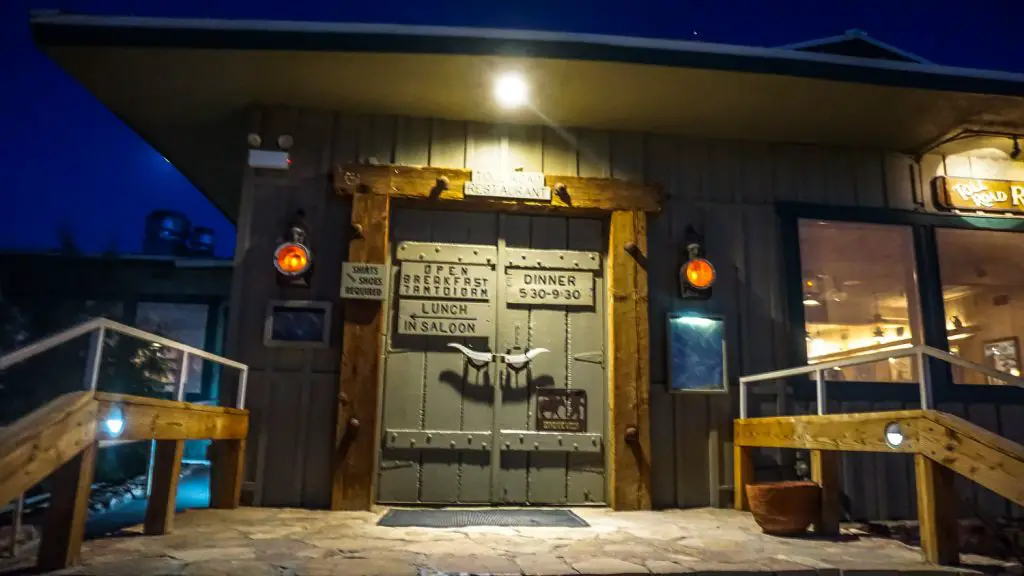
Day 2: Explore Death Valley
This day is dedicated entirely to exploring Death Valley. We wanted to get up early enough to see the sunrise at Zabriskie’s Point. As with Joshua Tree, we packed our breakfast and lunch with us in the form of snacks/leftovers from previous dinners.
Zabriskie Point and Hike – 6:30am to 10:30am
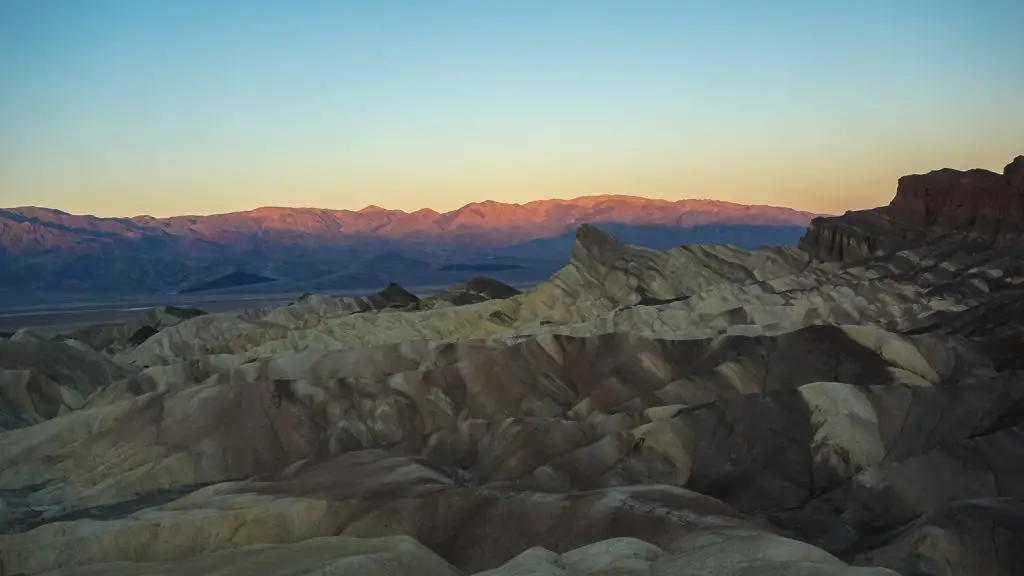
One of the most renowned vistas in Death Valley National Park can be had at Zabriskie Point, which features an impressive nest of badlands. These are heavily eroded and barren sedimentary formations, most famously associated with certain parts of the Great Plains but found in many dry regions of the globe. Set along Furnace Creek, the Zabriskie Point badlands, carved out of mudstone, are particularly scenic against the blank flats of Death Valley and the mountains looming beyond.
Some of Death Valley’s most iconic pictures are taken here. For the sunrise, there were 15-20 people perched at the lookout with their tripods waiting for the best picture opportunities.
After sunrise, I was about to leave until I saw signs near the parking lot for hiking trails. I had no idea you could walk onto these rocks but I’m glad I saw the sign!
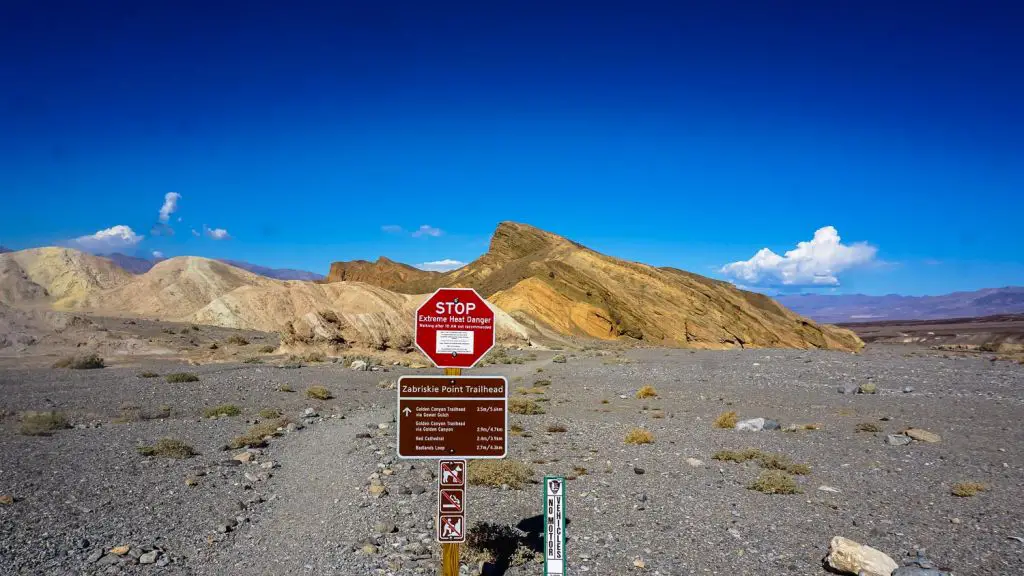
This is where the real magic is. It’s one thing to look at these badlands from afar but walking through them is special. We did the Golden Trail loop for about 5 miles round trip. Climbing up and down the rocks was not as difficult as I expected as the elevation is not so extreme. The views and picture opportunities here are effortlessly picturesque and it’s hard to take a bad picture.
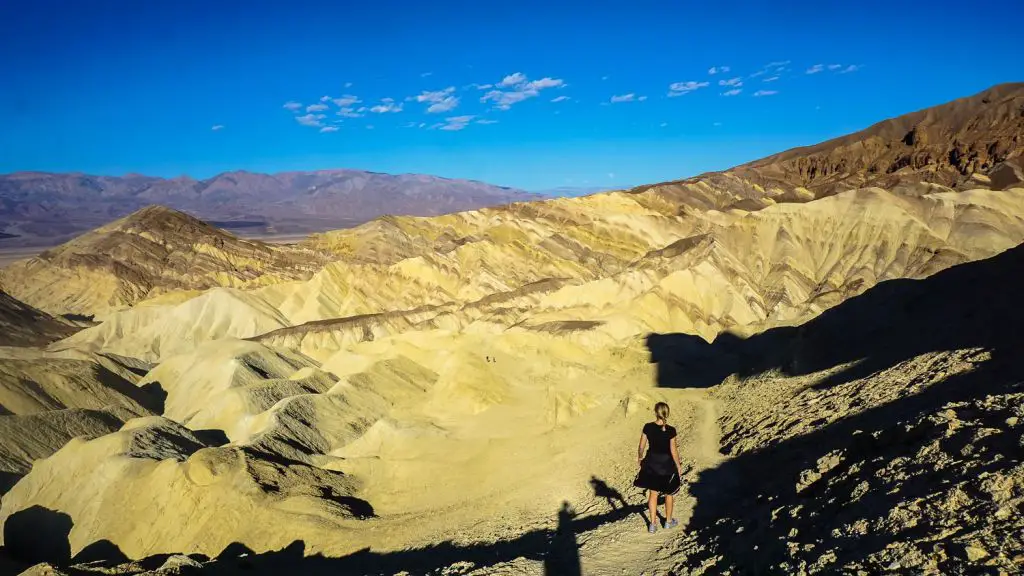
The trails are marked as one way distance, NOT round trip. It said 3.5 miles for the Golden Canyon hike but that means 7 miles for the loop!

We spent 2.5 hours hiking up and down these rocks. I think it was because we left so early but we did not encounter a single person on our hike the entire time.
Although there are no bad pictures here, I think the coolest way to take a picture with someone in it is to take it from a distance. Zoom in on the person from afar with the background in the picture. Something like this:

Or this:
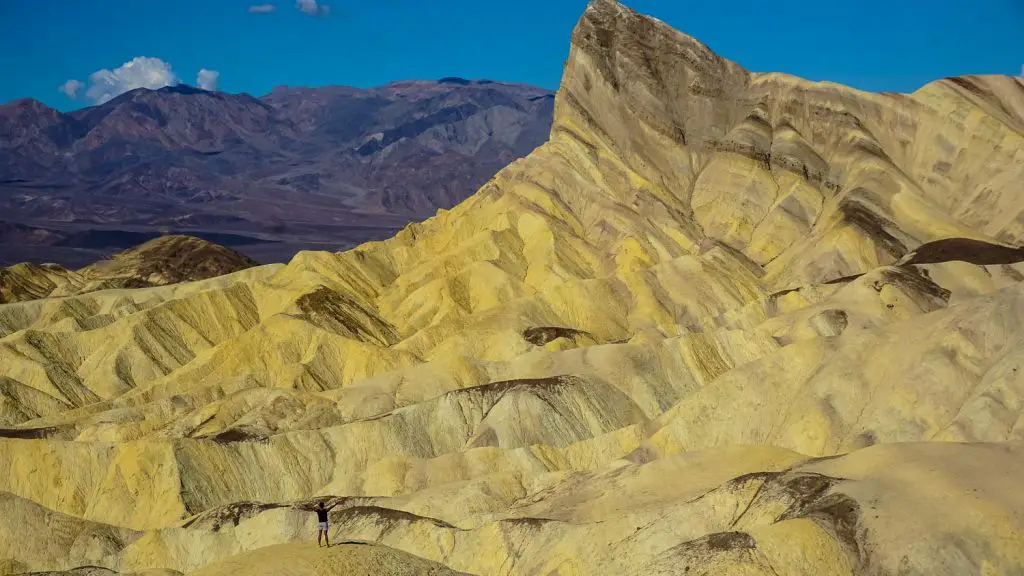
Devil’s Golf Course – 11:00am to 11:15am
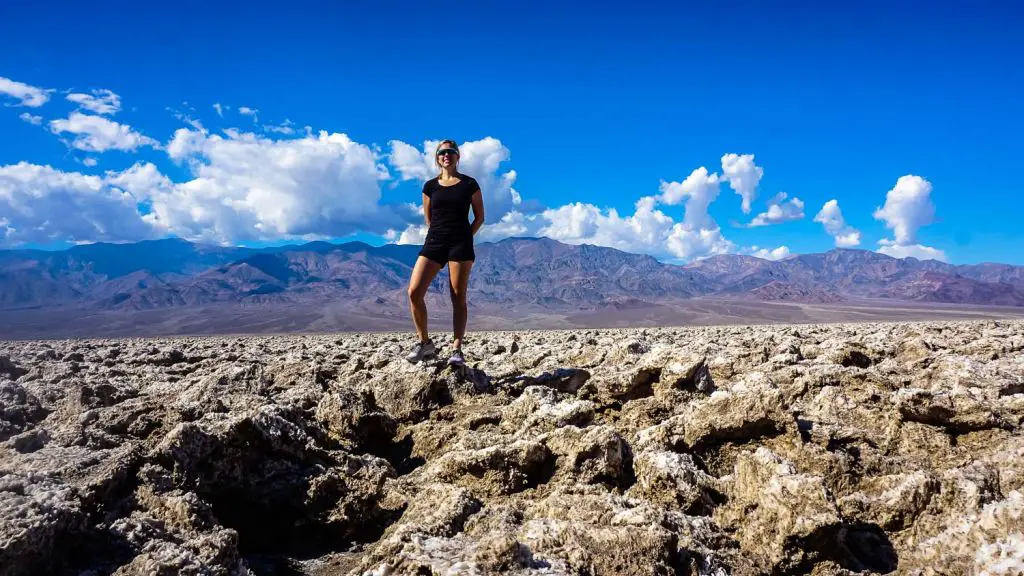
After Zabriskie Point, our plan was to drive to the Badwater Basin to look at the Salt Flats. Along the way, there are a few other sights to see including the Devil’s Golf Course. Located nearby to the Salt Flats, the Devil’s Golf Course is a salt pan covered with lumps and spires of crystalline salt.
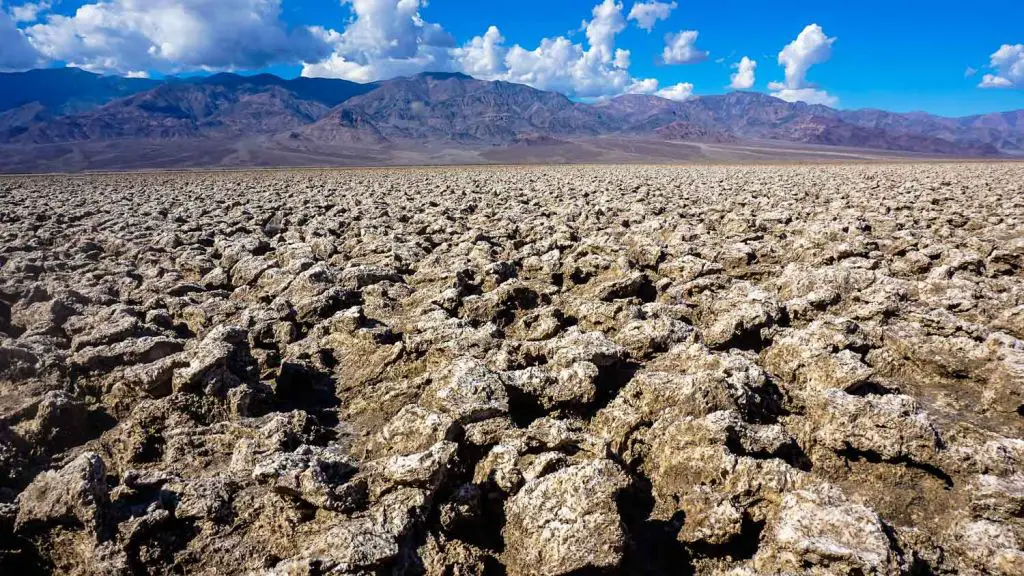
These clumps are incredibly sharp and there are warning signs all over saying do not fall, otherwise these incredibly sharp salt rocks will maim you. There isn’t much else to do here besides take a picture and check it off the list. You really will mess yourself up if you make one wrong turn. The pictures are worth a visit though!
Natural Bridge – 11:30am to 12:30pm
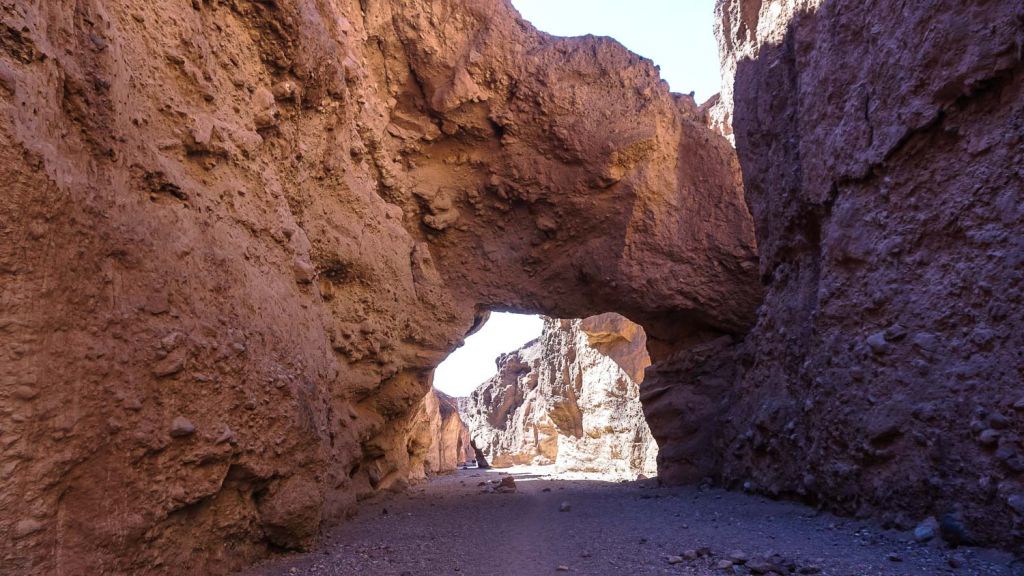
Or take a one-mile round-trip hike to Natural Bridge, a dramatic rock formation that spans a wash. And an unpaved road leads to Devil’s Golf Course, a jagged expanse of eroded rock salt. (Note that hiking is not advised during summer months.)
Badwater Basin – 1:00pm to 2:00pm
No trip to Death Valley would be complete without a visit to the Badwater Basin. Located at the southern part of the park, this is the lowest point in North America at 282 feet below sea level.
From the plaque at the entrance of the park:
“Badwater Basin in Death Valley National Park is the lowest point in North America, with an elevation of 282 ft below sea level. At Badwater, significant rainstorms flood the valley bottom periodically, covering the salt pan with a thin sheet of standing water. Each newly-formed lake does not last long though, because the 1.9 inches of average rainfall is overwhelmed by a 150-inch annual evaporation rate. This means that even a 12-foot-deep, 30-mile-long lake would dry up in a single year.”
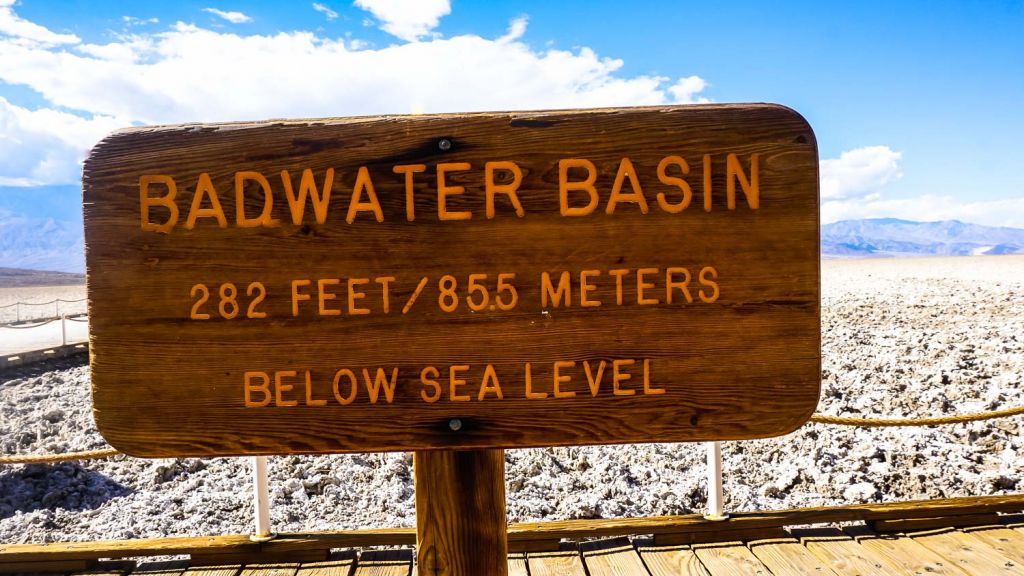
From the parking lot, it is about 20 minutes walking to the whitest part of the salt flats. Most people didn’t even walk to the expansive part of this attraction, but I would highly recommend walking past the brown part of the salt flats at the beginning of the park.
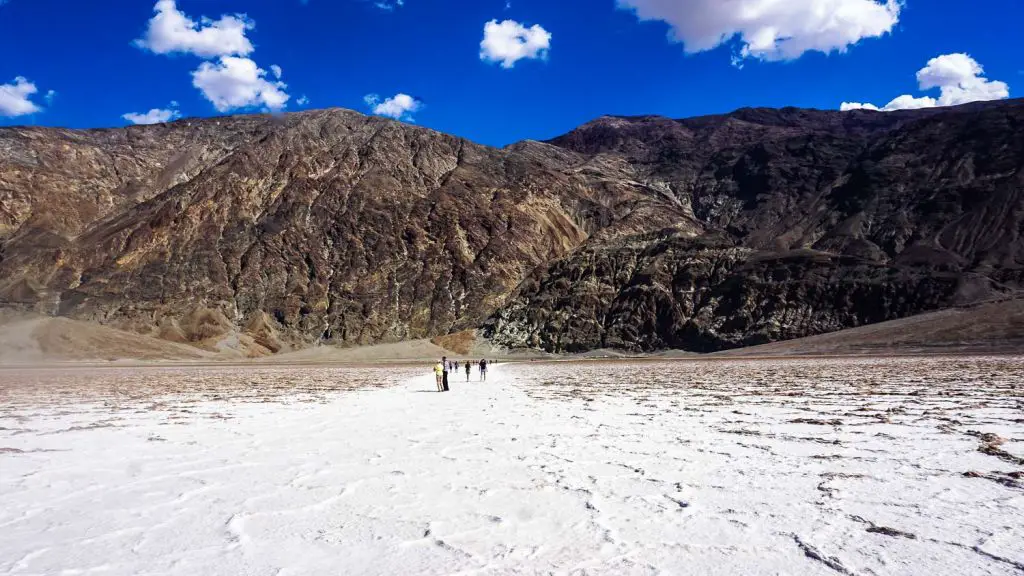
It is remarkable that something like this exists in a desert and mountainous area like Death Valley. It is very similar to the Uyuni Salt Flats of Bolivia, although only a fraction of the size. The salt crystals are much bigger than those in Uyuni which is why you see many cars driving through the Uyuni salt flats. Nevertheless, the surrounding dramatic mounts of the Badwater Basin makes this place very unique.
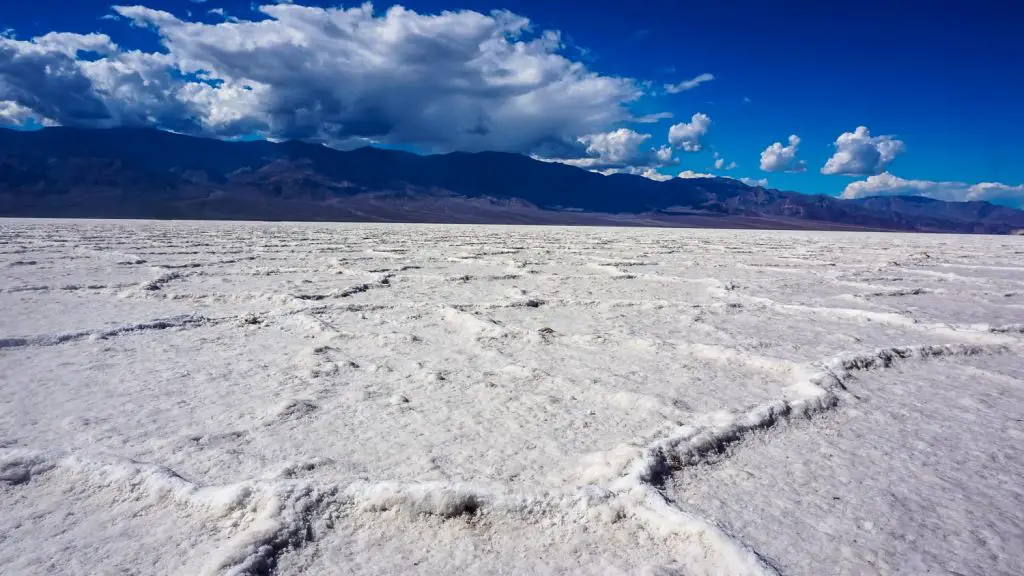
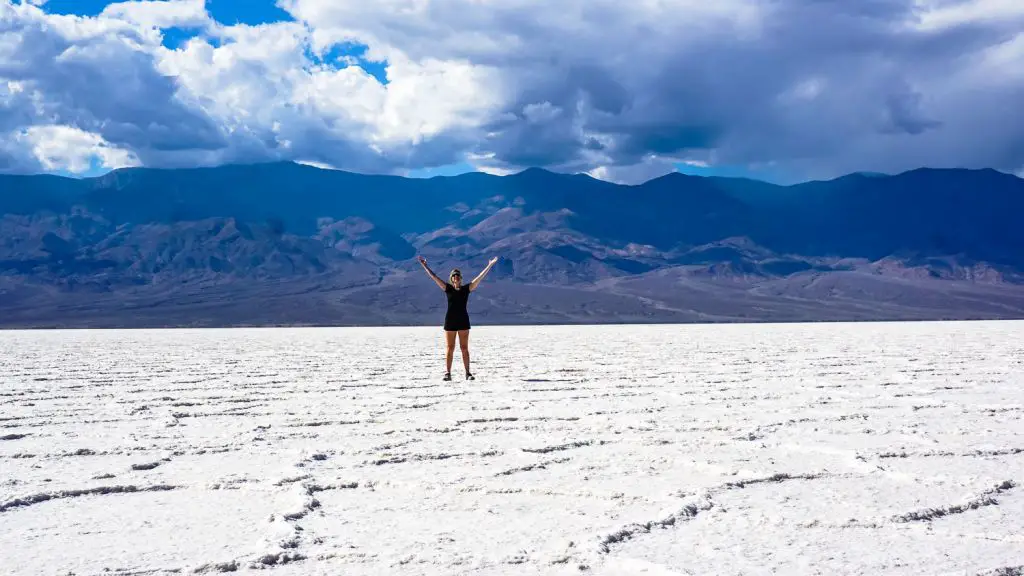

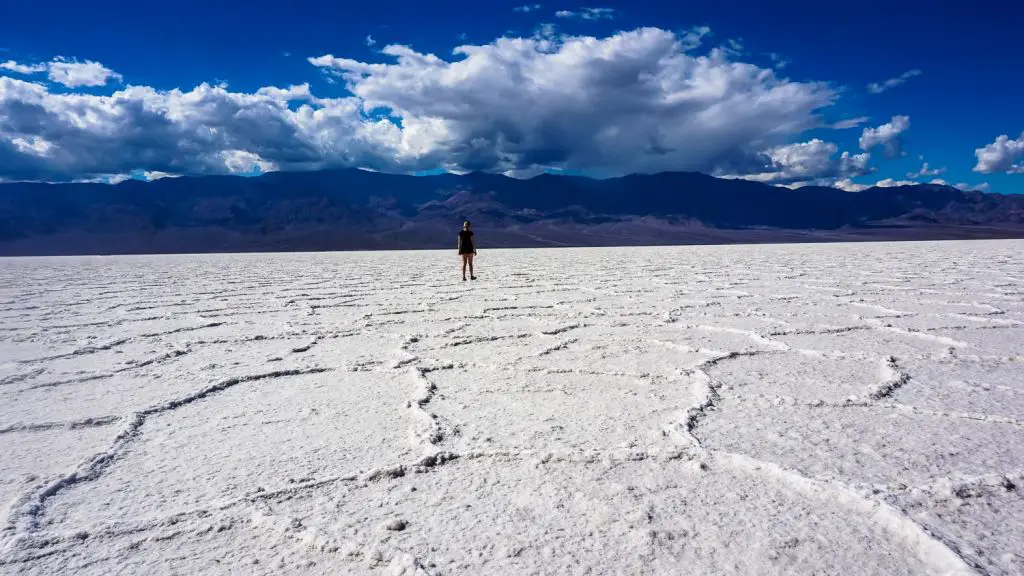
Relaxed at the Oasis Inn inside Death Valley – 2:30 to 4:00pm
After Badwater Basin, it was getting very hot out (90F+/32C+) and we had been out since dawn so we decided to take a break at the Oasis Inn. We weren’t staying here (but at their other resort The Ranch) but no one seemed to mind. We took a dip and then a nap by their pool which was nice and refreshing.
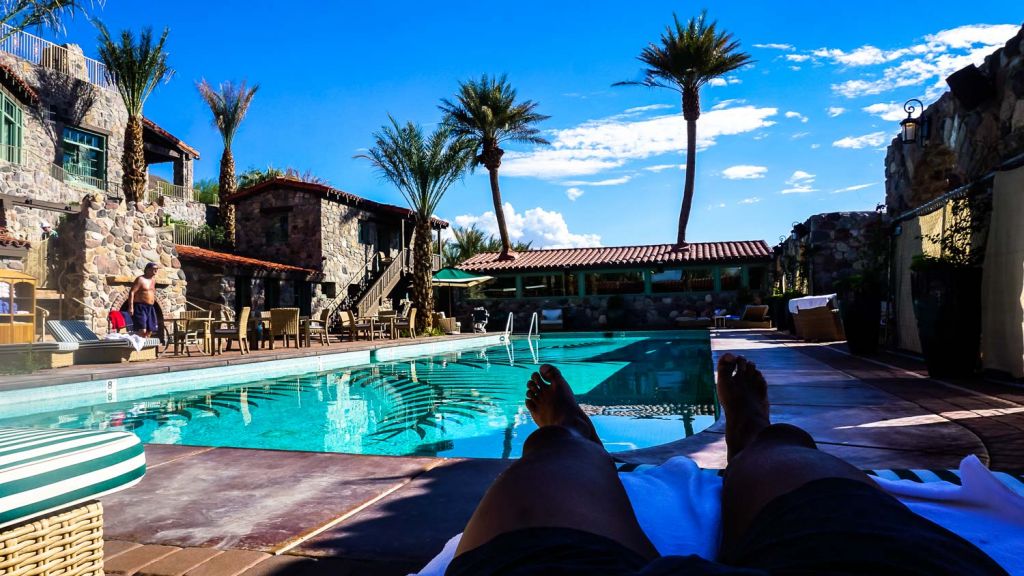
Artists Drive and Artists Palette – 4:00pm to 5:00pm

The Artists drive is a scenic side road near the Natural Bridge and the Badwater Basin. It goes through a series of colorful mountains hence the name Artists Drive. It culminates at the Artist’s Palette, a mountain that looks as if someone with a giant paintbrush dipped it in many different colors painted the mountainside. With shades of green, white, pink, brown and, yellow, this is one of the most iconic places in Death Valley.
Also coming here at different times of the day and of the year will yield a different image as sunlight, rainstorms, and windstorms re-arrange the color palette of the mountain.


Zabriskie Point Sunset – 5:30pm to 6:30pm
I was so impressed with Zabriskie Point that I wanted to go back and catch it at sunset. As with all of Death Valley, it’s all about time of day as different positions of the sun bring out different colors and hues. Zabriskie is a shining example of this. The colors at sunset were more pronounced as the sun made its way over the horizon. Was it better than sunrise? It’s hard to say but I can safely say it is a great place to drink some wine and enjoy nature at its finest.


Dinner at the Oasis Inn
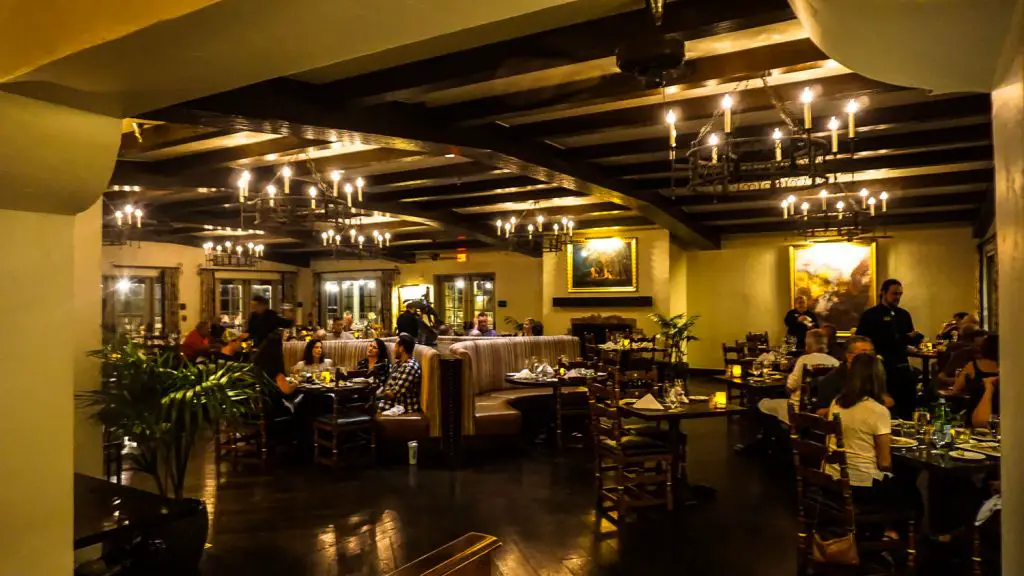
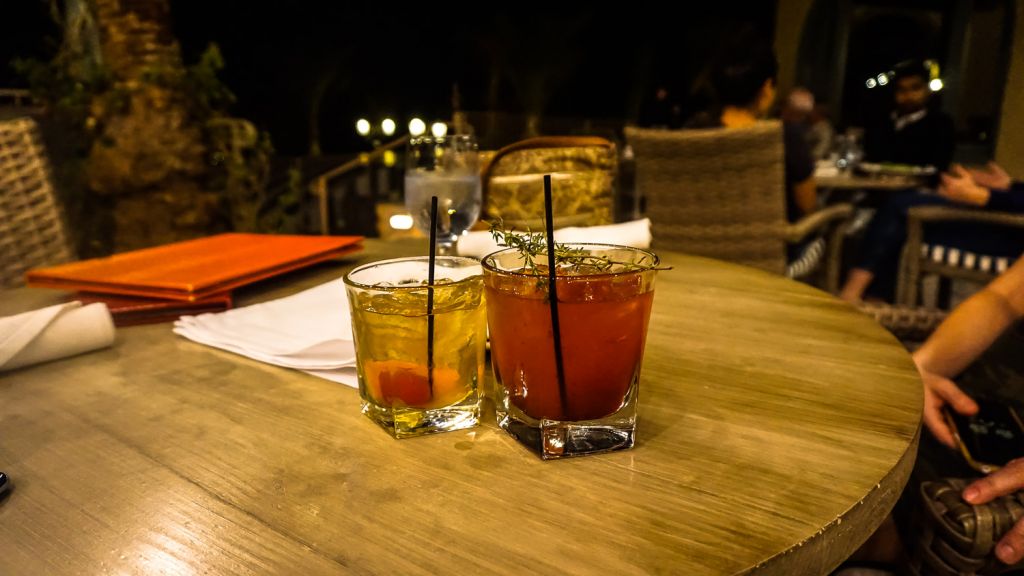
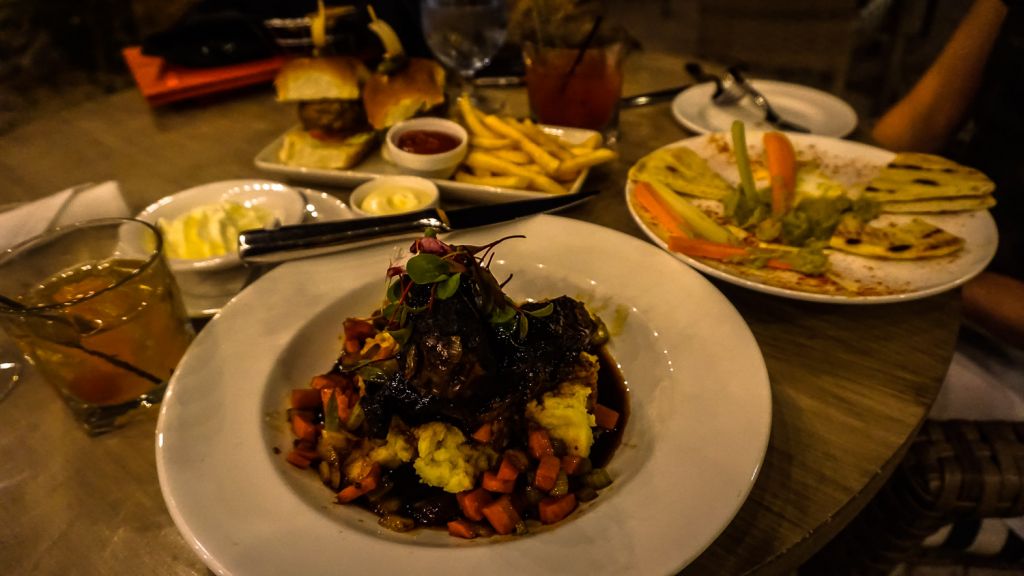
We made reservations at the Oasis Inn for dinner. As it is by and far the nicest hotel in the park, and probably within many zip codes, the food here was fantastic. The menu changes seasonally but we drank cocktails and ate a short rib dish that was absolutely delicious. A welcome reprieve from the countless burgers, fries, jerky, and random snacks we had been eating.
Day 3 Morning: Death Valley
The next day, we woke up early again to catch the sunrise. This time, we decided to go to the Badwater Basin and watch the sunrise over the Salt Flats.
Sunrise at Badwater Basin – 6:30 am to 8:00 am
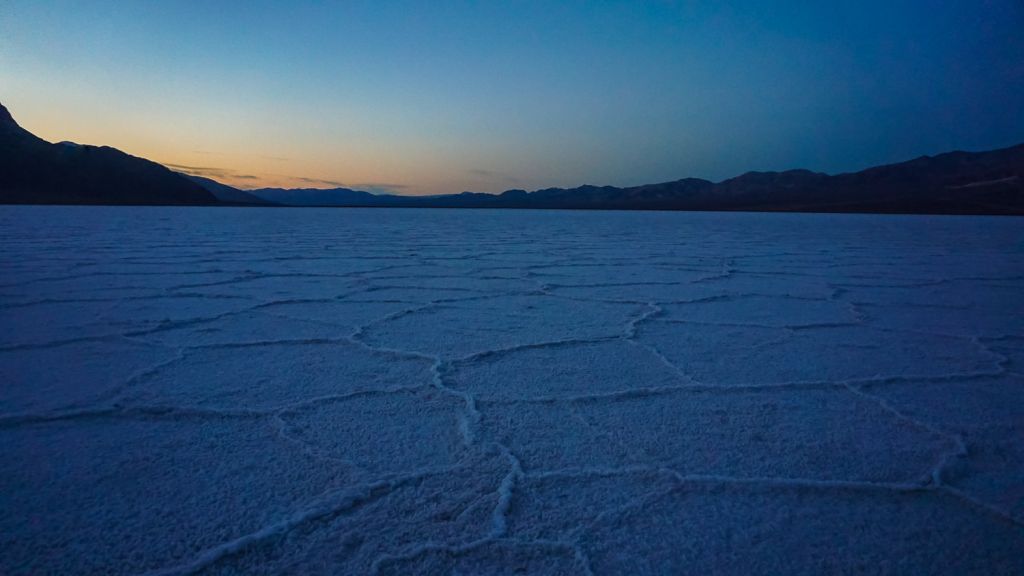
We arrived here around 6:30 and walked 30 minutes from the parking lot until we were far out into the salt flats. There were a few other people here taking pictures but it never felt crowded at any point. The morning hours are a fantastic time to come to the Salt Flats and a great time to make photographs.
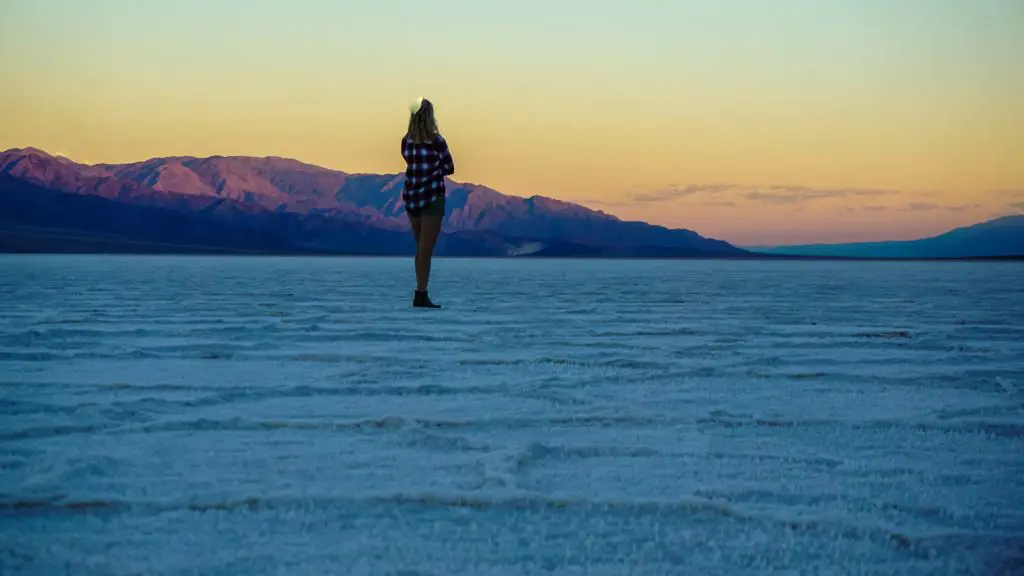
Ubehebe Crater – 9:30 am to 10:00 am

Ubehebe Crater is a giant crater located near the northern part of Death Valley National Part. It is the starting point of the dirt road that leads to some of Death Valley’s best spots such as the racetrack, lost burro mine and teakettle junction; however, the crater itself is worth a trip to in itself.
We hadn’t even heard about it until our waiter from the Oasis from the previous night told us about it. I guess I am a fan of giant holes in the ground so we had to come here.
Ubehebe Crater is a maars volcano that was created by a phreatic eruption two to seven thousand years ago. Hot magma converted groundwater into steam, which created an intense pressure and an intense explosion. The result was a half-mile wide crater surrounded by a large cinder field.
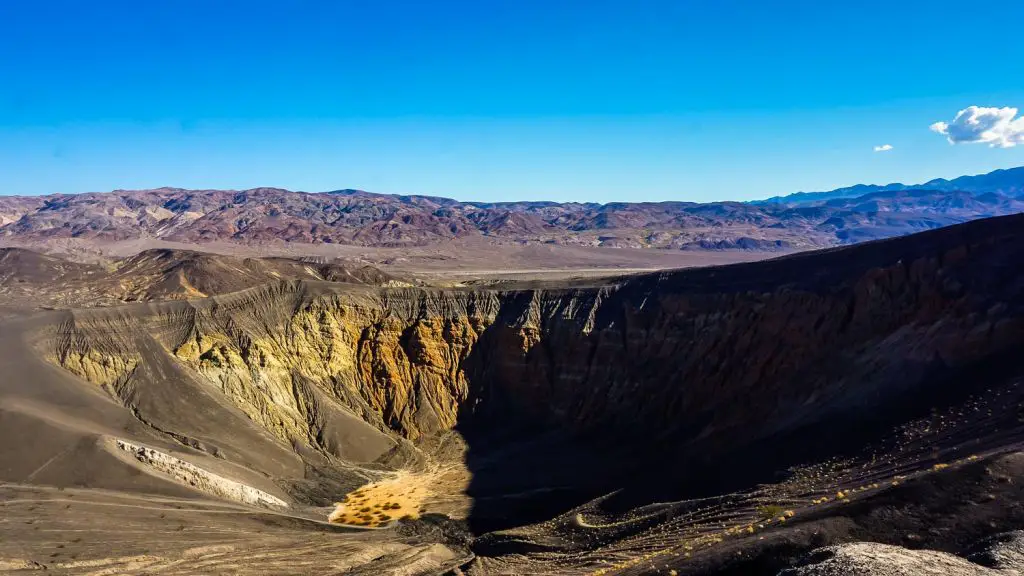
The crater is half mile wide and about 700 feet deep. You can actually climb down to the bottom of it but the thought of climbing back up was not appealing. As we did so many hikes already on this trip, we walked to the first peak of the crater and called it a day as the views won’t really look much different from anywhere else (it is just a giant crater).
Dante’s View – 11:30 am to 12:30 pm
Similar to Keys View in Joshua Tree, Dante’s View is at the peak of a mountain overlooking the entire valley. The views here are quite insane and you don’t need to hike at all to get there (just drive). If I did this itinerary again, I would come here for sunset next time as the sun sets directly in front of the viewpoint.

Day 3 Afternoon: Red Rock Canyon
After visiting Dante’s View, it was time to exit the park and drive towards Las Vegas. Make sure you have enough gas to make it at least until the town of Pahrump. If you’re visiting from Death Valley to Las Vegas, this is the last town you will see so make sure to stock up on supplies and gas here.
From Pahrump, it is just 1 hour to the Red Rock Canyons.
Red Rock Canyon National Park information
Red Rock Canyon National Conservation Area is a spectacularly scenic area in the Mojave Desert, just west of Las Vegas, Nevada. The park has beautiful hiking trails and some great rock climbing spots.
Red Rock Canyon is one of my favorite places to hike in Southern Nevada. It’s very popular with locals, but not so much with tourists. This means that you’ll find less people here than other areas like Valley of Fire State Park or Hoover Dam (although it is still crowded). It also means that you’ll have the opportunity to see some really cool wildlife like coyotes, rabbits and even snakes!
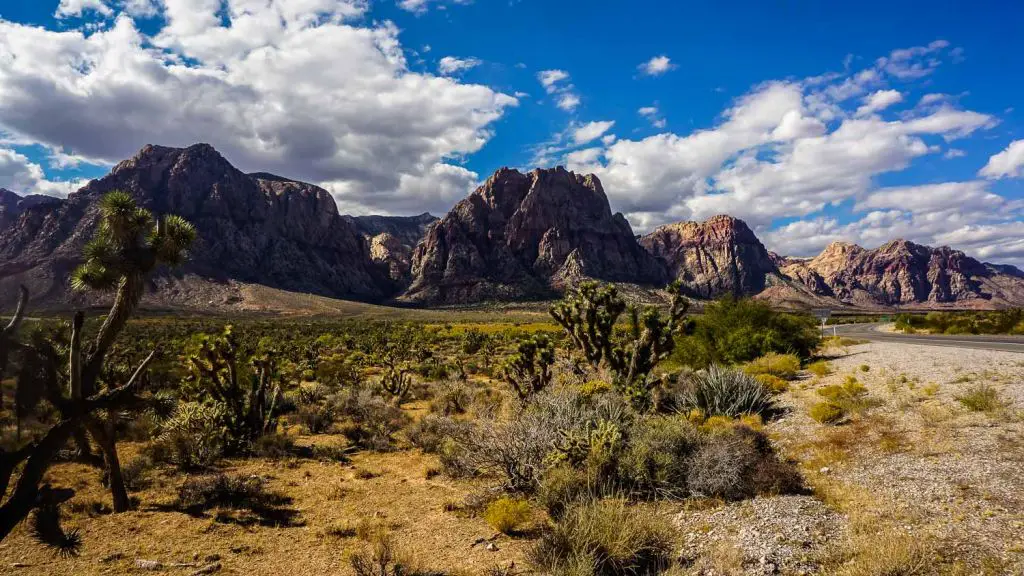
There are several hiking trails within Red Rock Canyon NCA that range from short 0.5-mile loop hikes to longer hikes that cover nearly 7 miles round trip. All trails are clearly marked with signs at each junction so you never get lost (as long as you pay attention!).
If you’re visiting during the warmer months (April-October), I highly recommend bringing sunscreen and water because there isn’t much shade here. However, if you’re visiting during winter months (November-March), be prepared for cooler weather since temperatures can drop below freezing at night!
Red Rock Canyon Scenic Loop – 2:30 to 5:00 pm
Red Rock Canyons really reminded me of the Isalo National Park in Madagascar. Sure there are no lemurs here, but the canyons, rock formations, and colors are exactly like the canyons hike in the Isalo National Park.
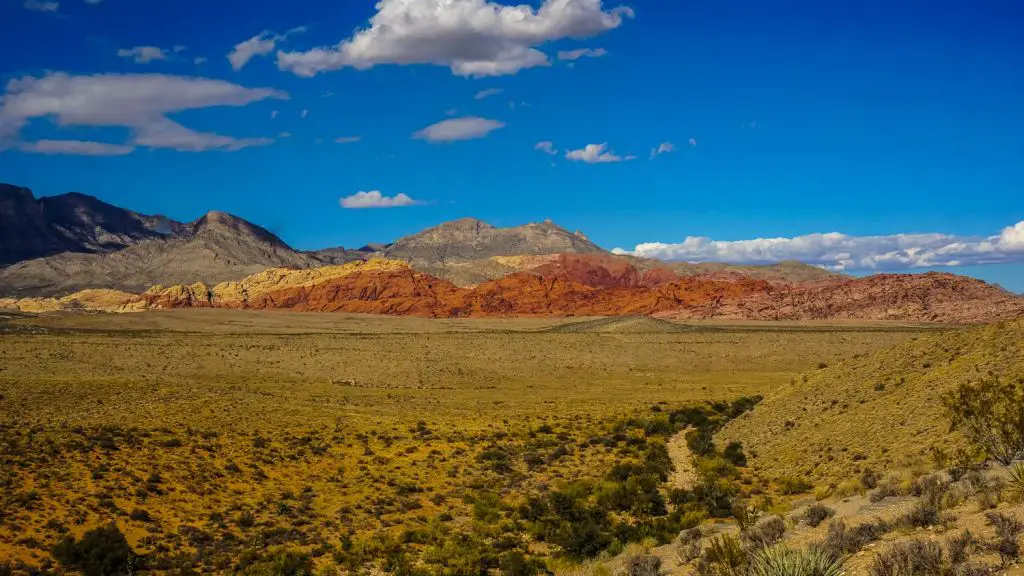
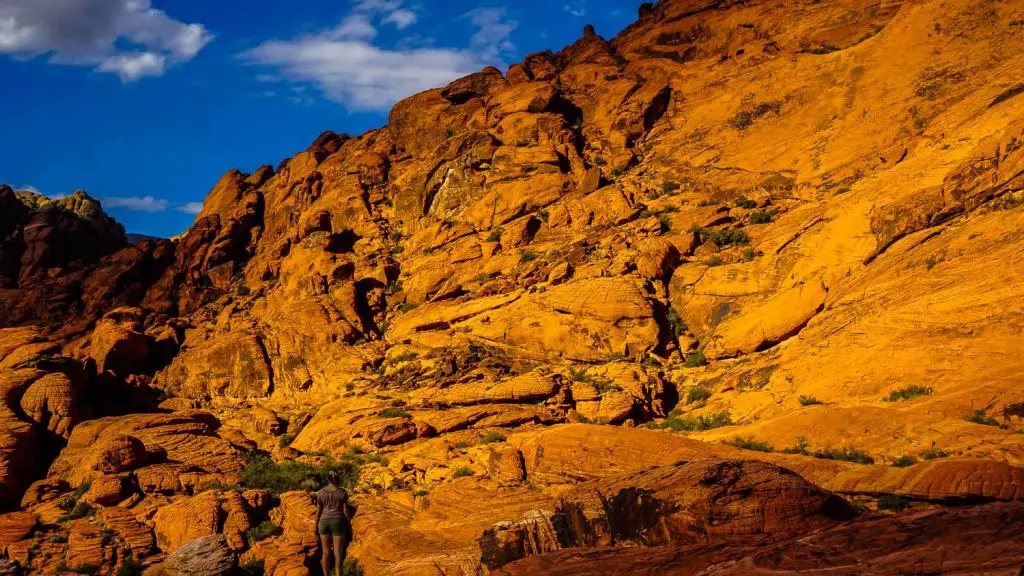
Red Rock Canyon offers fantastic hiking and trails that meander through the fiery rock exterior. I didn’t spend as much time here as I had hoped but it was enough to witness its natural beauty.
No matter what, the Red Rock Canyon is a must visit if you’re just staying in Las Vegas. It’s an easy 30 minute drive from the city and much more worth it than just getting drunk and losing money in Vegas.
The cost to visit the Red Rock Canyon is $15 per vehicle.
Las Vegas to Death Valley Day Trip
If you don’t have two nights to visit Death Valley but still want to see it on a day trip, then you’ve come to the right place.
Death Valley is very popular as a day trip from Las Vegas. There are many tour companies in Vegas that will organize the trip but it’s probably cheaper just to rent a car and do it yourself.
The day trip won’t give you the full experience of Death Valley but you’ll definitely see the highlights. Make sure to bring plenty of water and snacks for this trip as Death Valley is barren once you arrive.
This is how I would structure a day trip from Las Vegas to Death Valley:
6:30am: Leave Las Vegas and drive 2h to Death Valley
8:30am: Enjoy the morning hours at Zabriskie Point hiking a bit into the valley
10:30am: Devil’s Golf Course
11:00am: Badwater Basin
12:00pm: Artist Drive
1:00pm: Lunch at Oasis Inn, relax for a a bit to and wait for the sun to cool
4:00pm: Drive to Mesquite Sand Dunes
4:30pm – 6:30pm: Mesquite Sand Dunes sunset
7:00pm – 9:00pm: Drive back to Las Vegas (stopping for dinner on the way if necessary)



